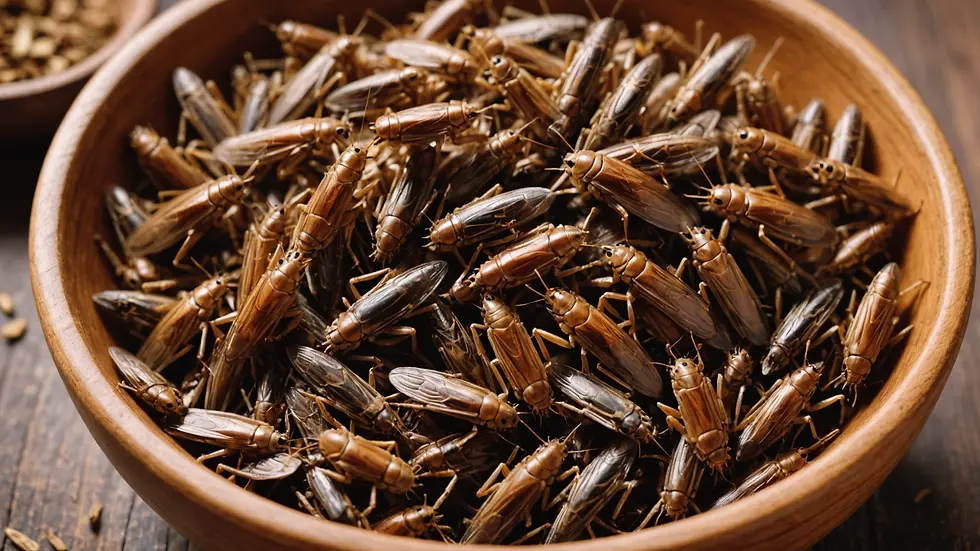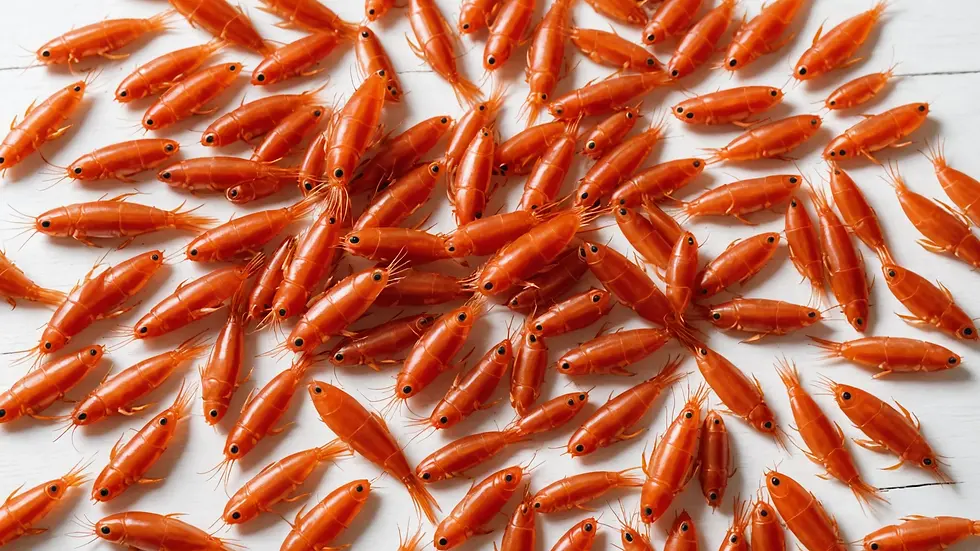What Are the Best Options for Alternative Fish Foods?
- Jyotiraj Borah
- Feb 7
- 4 min read
Fish are a rich source of protein and nutrients, making them a popular choice in diets worldwide. However, as aquarists or fish farmers, you might be looking for better alternatives that support fish health while also being kind to the environment. With growing concerns about the sustainability of traditional fish feeds, it’s vital to explore alternative options that not only nourish fish but also promote ecological balance. This post highlights some of the best alternatives for fish diets, emphasizing their benefits and practical tips for integration.
Understanding Alternative Fish Foods
The term "alternative fish foods" refers to various dietary sources that move away from the conventional pellets and flakes used in aquaculture. These alternatives can originate from plants, insects, or marine organisms, enhancing fish health and environmental sustainability in the process.
The shift toward alternative fish foods is driven by several key factors:
Resource Efficiency: Using alternative protein sources reduces our reliance on dwindling wild fish stocks. Traditionally, about 70% of fish meal in feed comes from wild fish.
Lower Environmental Impact: These foods often have smaller ecological footprints. For example, producing insect protein can be up to 100 times more efficient than raising traditional livestock in terms of feed conversion.
Cost Benefits: In many cases, plant-based and insect proteins can be more economical, leading to potential savings.
These benefits contribute to healthier fish, greater sustainability, and increased availability of nutritious food sources.
Plant-Based Fish Foods
Benefits of Plant-Based Diets
Plant-based fish foods come from terrestrial sources such as algae, soy, and grains. They are packed with vitamins, minerals, and crucial omega-3 fatty acids. Incorporating these foods can tackle challenges linked to fish nutrition, especially regarding sustainability.
Key Advantages:
Reducing the demand for fish meal helps preserve marine ecosystems.
Plant-based diets can often lead to lower overall feed costs. For instance, switching to a soy-based feed can result in a cost reduction of 15-30% in some aquaculture operations.
These diets can be tailored to the growth needs of specific fish species, promoting faster growth and better health.
Examples of Plant-Based Fish Foods
Spirulina: This nutrient-rich blue-green algae is known for its high protein content and ability to enhance fish coloration.
Soy Products: Soybean meals provide a balanced protein profile and can be effectively fed to a wide range of freshwater species.
Kelp and Seaweed: These nutrient-dense marine plants contribute essential vitamins and can improve water quality in aquariums. They also support the immune systems of fish.
Utilizing plant-based diets can significantly ease the pressure on fish populations, meeting the dietary needs of aquatic life.

Insect Protein as an Alternative
Nutritional Benefits of Insect Protein
Insect protein is gaining ground in aquaculture for excellent reasons. Insects are rich in amino acids, vitamins, and fatty acids, making them a highly digestible protein source for fish. Importantly, insect farming requires significantly fewer resources than traditional livestock, producing only a fraction of the greenhouse gases. For example, producing one kilogram of crickets generates about 0.05 kilograms of greenhouse gases, compared to 0.3 kilograms for beef.
Types of Insect Protein
Commonly utilized insect proteins include:
Black Soldier Fly Larvae: They are packed with protein and healthy fats, offering a robust energy source for fish.
Crickets: These insects are not only rich in essential amino acids but also versatile as they can be utilized in both whole insect form and as a meal.
Mealworms: Similar to crickets, mealworms offer a high protein content. Their consistent usage in fish diets has shown improved growth and health.
Incorporating insect protein can create a balanced diet while promoting environmental sustainability.

Marine-Based Alternatives
The Shift Towards Marine Proteins
Marine-based alternatives such as krill and small crustaceans provide vital nutrients required for overall fish health. These marine options are rich in omega-3 fatty acids necessary for cardiovascular health. Strategic sourcing from sustainable fisheries can effectively replace traditional fish meal and alleviate overfishing pressures.
Popular Marine Sources
Krill Meal: Extracted from small crustaceans, krill meal is a favored choice due to its high protein content and omega-3 fatty acids, enhancing fish vitality and coloring.
Fish By-products: Utilizing by-products from fish processing reduces waste while providing essential nutrients to fish feeds.
Chlorella: This algae is known for boosting immune support and promoting growth in fish.
Exploring marine-based alternatives not only fulfills the dietary demands of fish but also encourages sustainable aquaculture practices.

Impact on Fish Growth and Health
Improving Fish Health Through Alternative Diets
Switching to alternative fish foods can lead to remarkable improvements in growth and health. Various studies have shown that fish diets enriched with these alternatives often result in:
Faster growth rates: Fish on insect or algae-based diets can achieve 15-20% higher growth rates compared to conventional feeds.
Enhanced immune responses: This leads to lower mortality rates in certain species.
Moreover, diversifying fish diets minimizes the risk of nutrient deficiencies and related health issues.
Considerations When Changing Diets
Transitioning to alternative fish foods requires careful implementation. Introducing new foods gradually helps to minimize stress and avoids digestive issues. Close observation of fish behavior during this period is essential to catch any potential problems early.
Regularly monitoring nutrient levels and animal health indicators is important to ensure your fish receive the intended benefits. Consulting with aquaculture nutritionists can provide tailored advice for a smooth transition and optimal outcomes.
Sustainable Practices for Fish Health
In recent years, the exploration of alternative fish foods has opened doors to improve both fish health and ecological sustainability in aquaculture. From plant-based to insect and marine options, each alternative offers distinct benefits that can enhance fish nutrition effectively.
As the demand for sustainable practices increases, finding alternatives to traditional feed sources is crucial. By incorporating these options, aquarists and fish farmers can nurture healthy fish populations while supporting environmental health.
Ultimately, the key to success lies in understanding the unique dietary requirements of your fish and committing to sustainable feeding practices. This approach not only promotes the vitality of your aquatic life but also ensures a balanced ecosystem for generations to come.




Comments